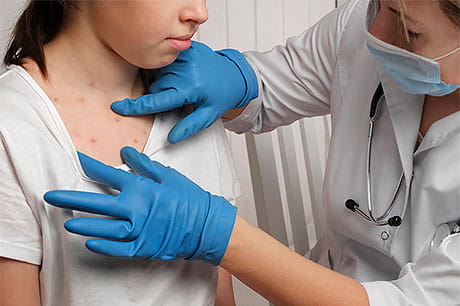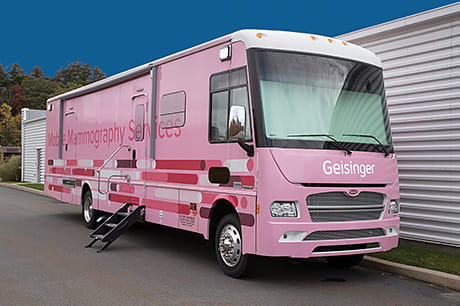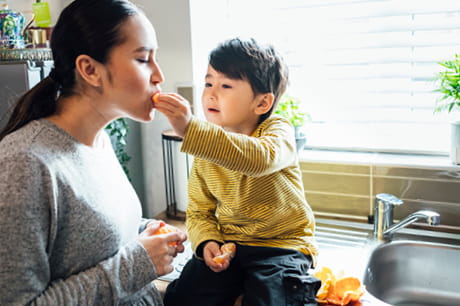Human trafficking: Is it happening near you?
How to spot it — and how to help.
Human trafficking is defined by the United Nations as “the recruitment, transportation, transfer, harboring or receipt of persons by improper means (such as force, abduction, fraud or coercion) for an improper purpose including forced labor and sexual exploitation.”
Traffickers use force, fraud and coercion to trap their victims:
- Force – rape, beatings, confinement, drugs
- Fraud – false offers of employment, marriage, safety, a better life
- Coercion – threats, psychological abuse, debt bondage
According to statistics on human trafficking, who is most vulnerable?
Most human trafficking victims are female, and about a quarter are minors. Many experience sexual exploitation first.
Kellee Neyer, RN, and Teena Kubasti, RN, saw enough red flags for sex trafficking in Geisinger emergency rooms that they devised a training protocol to help medical staff identify victims, separate them from their handlers and get them to safety and recovery.
“When people think of human trafficking, they think of kidnappings,” Ms. Neyer explains. “They think of vans or trucks. And because we’re on the Route 15 or 80/81 corridor, we do see a lot that. But honestly, much of the trafficking we see locally is familial — a parent, sibling or other family member is behind it.”
The fastest-growing form of human trafficking is familial.
In familial trafficking, predators have or gain their victims’ trust and will take their time once they’ve identified a “soft target” — someone who’s especially vulnerable to manipulation. The grooming often begins when victims are young. The predator can be a family member or a teacher, coach, scout leader, clergy member or even someone the victim meets online. Keep in mind that “stranger danger” isn’t always accurate. It’s smart for you or your child to be alert to any person who doesn’t feel right.
That includes interactions via the internet, social media and video game chats. There are advantages of 24/7 connection to anyone, anywhere, but always keep safety and privacy in mind.
It’s not always easy to peg someone as a predator. Human traffickers can be male or female and come from all walks of life. Some victims befriend and recruit new victims and act as enforcers just to survive.
Teach your kids to stay safe
Kids who don’t share information about themselves online are at less risk of becoming victims. Predators are willing to work slowly to gain trust once they’ve determined a child is a soft target and will go to great lengths to groom them.
Teach your children to listen to their intuition — that small voice that tells them something doesn’t feel right. A red flag means it’s time to end the conversation and tell a trusted adult what was going on.
Have honest dialogues with your children about sexual exploitation and human trafficking. Remind them that inappropriate photos they share online can end up anywhere and even be used as blackmail. Sex trafficking often begins here.
Most importantly, let your children know they can always turn to you if something doesn’t feel right — online or in life.
What to do if you think you spot a human trafficking situation.
Ms. Neyer and Ms. Kubasti developed a list of things for healthcare workers to look for in the ER. But if that’s not where you work, what signs should you watch for — and what do you do if you think someone might be a victim of human trafficking?
If you see someone raise their hand, palm out with the thumb tucked in, and then fold their fingers over the thumb, they’re sending you a message that they’re being held captive. It could be domestic violence. It could be human trafficking.
Either way, they need help.
If a victim is out in public, there’s usually a handler lurking nearby. The person being trafficked is likely to avoid eye contact and interaction with anyone — including their handler, who may be (or be posing as) a spouse, partner, friend, family member or employer.
If you can, ask the person you suspect is being trafficked, “Are you safe?” Asking them directly about trafficking is likely to bring up feelings of shame and fear and cause them to shut down. Speak to them only if you know their handler cannot hear you. Their reaction to that simple question will probably tell you all you need to know.
Never approach the handler yourself but notice details such as bone structure, height and weight, tattoos, birthmarks and anything else that can’t be changed or is not likely to be changed frequently — including type of shoes. These details are what law enforcement will need if you contact them.
Could you be a victim of human trafficking?
If you’ve been forced, defrauded or coerced into doing things that don’t feel right, ask yourself:
- Can you leave your job or situation if you want?
- Can you come and go as you please?
- Has anyone threatened you or your family?
- Are your living conditions safe and sanitary?
- Do you have to ask permission to eat, sleep or use the bathroom?
- Are there locks on your doors and windows so you can’t get out?
- Does someone prohibit you from socializing or attending religious services?
- Are you getting paid for your work and can you keep the money?
Need help? It’s out there.
National Human Trafficking Hotline: 888-373-7888
In Pennsylvania – YWCA Greater Harrisburg: 800-654-1211
Watch for human trafficking to keep it contained
Predators are cowards. They’re looking for soft targets to groom and exploit. That means the more of us who are aware of the problem and know how to respond, the harder it’ll be to find victims. And the less often victims will show up in our hospitals for brave nurses like Ms. Neyer and Ms. Kubasti to rescue.
Next steps:
Learn more about human trafficking: Polaris Project
Bullying in school and beyond: A guide for parents and caregivers





